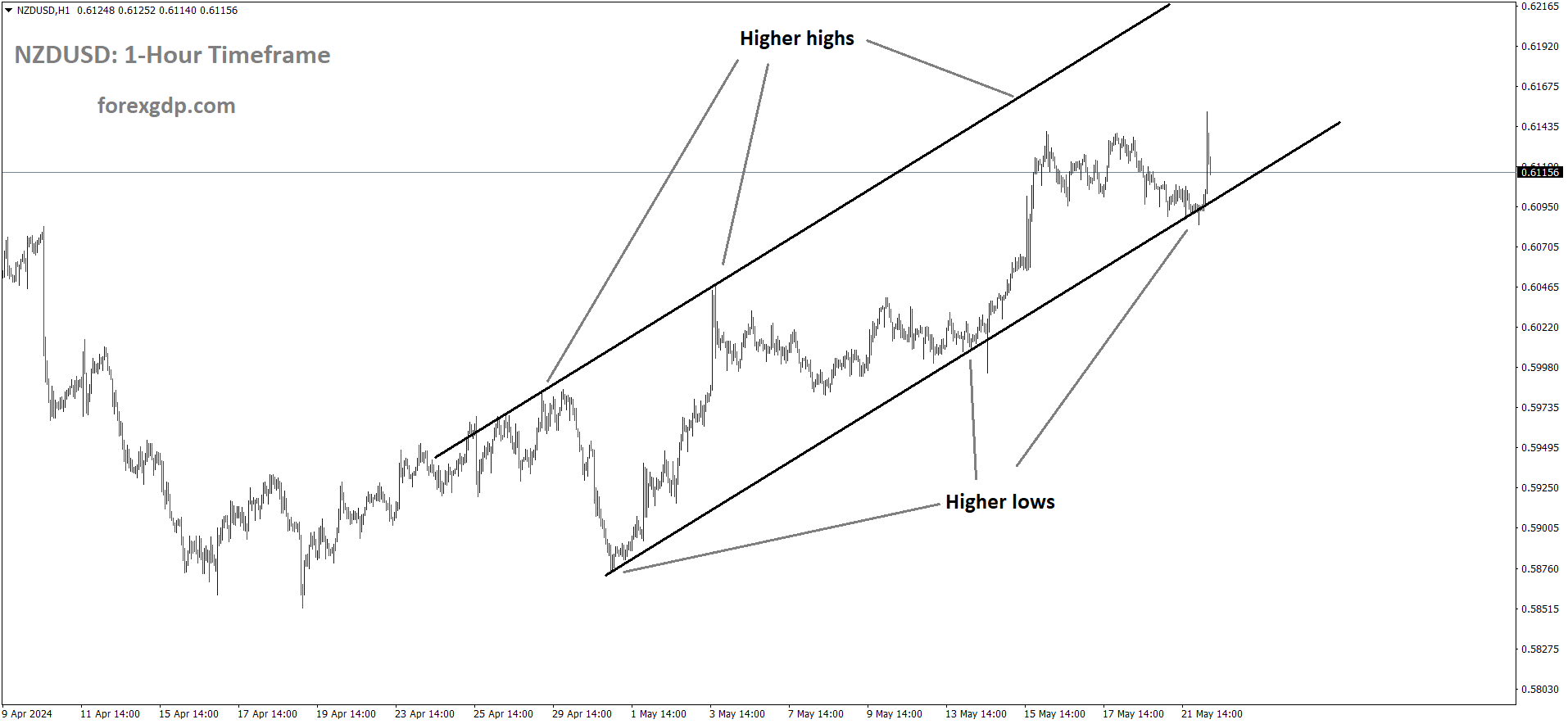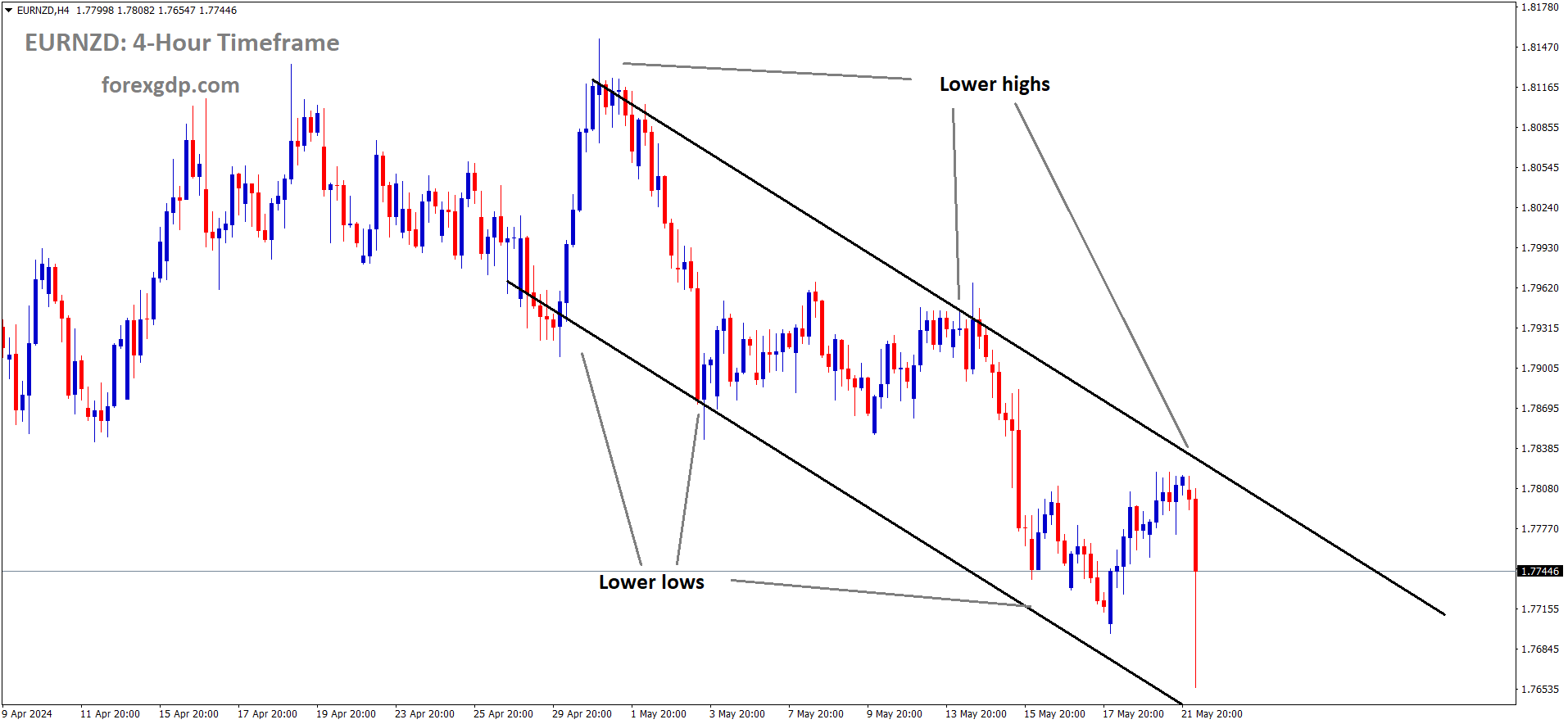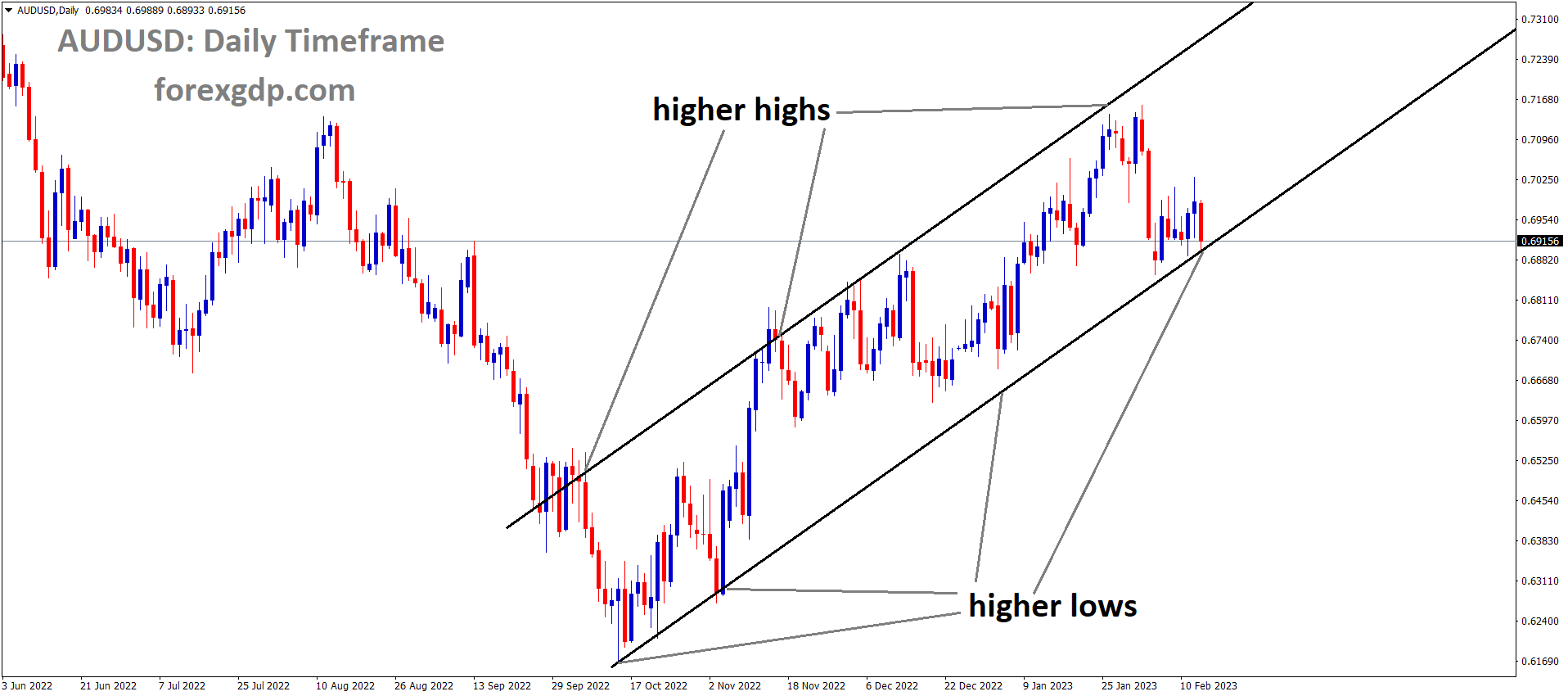NZD: RBNZ’s Orr: Inflation to Hit Target by Late 2024
The RBNZ Hold the rates at 5.50% today meeting, RBNZ Governor Orr Speech follows, This time rising rates at his consideration but members vote for Holding decision. Inflation rates will come down by the end of 2024, it is not absolute prediction, it is OCR track central projection. The Insurance, rent, rates did not affected by interest rates, only lower potential growth in NZ economy. Still far away our inflation target to come. Keep patience and domestic inflation will slowdown in coming months.

NZDUSD is moving in Ascending channel and market has reached higher low area of the channel
Reserve Bank of New Zealand’s (RBNZ) Governor Adrian Orr is addressing the policy outlook at a press conference following the announcement of the monetary policy decision on Wednesday.
Orr is fielding questions from the press.
Key quotes:
– Expect inflation to fall back into the target band by the end of 2024.
– It will take time for domestic inflation to decline.
– The economy has a lower potential growth rate, and it is uncertain if that is temporary.
– There is limited upside room for inflation surprises.
– We are pleased with inflation expectations coming down, but they need to fall further.

– The OCR track is a central projection, not an absolute prediction.
– We seriously considered raising rates at this meeting.
– A lot of high domestic inflation is affected by near-term factors.
– Insurance, rates, and rent costs are less sensitive to interest rates.
NZD: RBNZ Holds OCR, Warns of Prolonged Restrictive Policy
During today’s meeting, the Reserve Bank of New Zealand (RBNZ) chose to keep the Official Cash Rate (OCR) steady at 5.5%. RBNZ Governor Adrian Orr addressed the decision in his subsequent speech, noting that although there was some consideration given to increasing the rates, the committee members ultimately decided to maintain the current rate.

EURNZD is moving in Descending channel and market has fallen from the lower high area of the channel
Governor Orr stated that the projection, known as the OCR track, anticipates a decrease in inflation, aiming to hit the target range by the end of 2024. However, he cautioned that this is not a definitive prediction. Orr also pointed out that the cost of insurance, rent, and council rates has not been significantly influenced by interest rate adjustments, which is partly due to the New Zealand economy’s lower potential growth rate.
While acknowledging that reaching the inflation target is still a work in progress, Orr urged patience, assuring that domestic inflation is expected to decelerate in the coming months. He emphasized the need for ongoing restrictive monetary policies to ensure inflation falls within the desired range as projected.
The Reserve Bank of New Zealand (RBNZ) has maintained the Official Cash Rate (OCR) at 5.5 percent, citing a decline in inflation that is expected to meet the target by the end of 2024.
However, in a statement perceived as hawkish, the RBNZ warned that interest rates might need to remain elevated for a longer period.
This marks the seventh consecutive time the Monetary Policy Committee has kept the OCR unchanged as it works to bring inflation back to its 1-3 percent target range.
The RBNZ’s forecast for OCR reductions remains largely unchanged. The committee cautioned that monetary policy might need to stay “restrictive for longer than anticipated in the February meeting to ensure the inflation target is met.”
This news is likely to be unwelcome for mortgage holders.

CoreLogic NZ’s chief property economist Kelvin Davidson noted that while the central message was consistent with February’s, the new rate trajectory suggests significant mortgage rate cuts may not occur until 2025.
Davidson emphasized that mortgage rates are influenced by factors beyond the OCR, including bank competition and offshore financing rates.
He added that the conditions will remain challenging for at least the next six to nine months for new borrowers and existing mortgage holders needing to reprice up to current market rates. Sales volumes and property values may remain subdued, and even if mortgage rates decline significantly in 2025, potential debt-to-income restrictions could impact borrowers.
The committee considered raising the OCR at this meeting but decided against it, given more confidence that inflation would decline to within the target range over the medium term, despite near-term risks being skewed to the upside.
Financial markets interpreted the statement as hawkish, with the New Zealand dollar rising by about half a US cent to US61.50c. Westpac’s senior market strategist, Imre Speizer, noted the increased OCR forecast by five basis points at the peak, indicating a potential rate hike before cuts begin.
RBNZ forecasts now see the OCR peaking at 5.65 percent in the fourth quarter of this year, up from 5.60 percent in February’s statement. This reflects greater concern about inflation and the need for prolonged restrictive measures.
ASB’s chief economist Nick Tuffley observed more concern about service sector inflation and acknowledged that some inflation aspects are less sensitive to interest rates. He noted that the RBNZ’s inflation forecast remains high through 2024, barely reaching the 1-3 percent target band by year-end.
Tuffley expects the RBNZ to start cutting the OCR from February 2025, though the risk of a later start remains.
The committee also referenced the upcoming Budget, noting that lower government spending is expected to weaken aggregate demand. The impact of potential changes in government or private spending due to tax cuts will be assessed later.
Despite a cooling labor market and rising unemployment, higher rents, insurance costs, council rates, and other domestic services continue to drive inflation. The RBNZ stated that restrictive monetary policy has reduced capacity pressures in the economy, with annual consumer price inflation expected to return to the 1-3 percent target range by the end of 2024.
NZD: RBNZ Holds Rates Steady, Delays Cuts Due to Persistent Inflation
The Reserve Bank of New Zealand (RBNZ) decided to keep the Official Cash Rate (OCR) unchanged at 5.5% during today’s meeting. Following this decision, RBNZ Governor Adrian Orr delivered a speech explaining the rationale behind maintaining the current rate. Although there was consideration of raising the rates, the committee members ultimately voted to hold them steady.

AUDNZD is moving in Descending channel and market has reached lower low area of the channel
Governor Orr indicated that while the central projection, or OCR track, suggests that inflation will decline and return to the target range by the end of 2024, this is not an absolute prediction. He emphasized that factors such as insurance, rent, and council rates have not been significantly affected by interest rate changes, highlighting the lower potential growth rate of the New Zealand economy as a contributing factor.
Orr acknowledged that the inflation target is still some distance away and urged patience, assuring that domestic inflation is expected to slow down in the coming months. He reiterated the importance of maintaining restrictive monetary policies to ensure that inflation returns to the desired range within the projected timeline.
The Reserve Bank of New Zealand (RBNZ) kept interest rates steady as expected on Wednesday but signaled a potential delay in interest rate cuts due to persistent inflation pressures.
The RBNZ maintained its official cash rate (OCR) at 5.50%, marking the seventh consecutive meeting with unchanged rates, in line with market expectations. While the bank had ended its rate hike cycle in mid-2023, it now anticipates keeping rates elevated for an extended period due to signs of stubborn inflation.
“The welcome decline in inflation partly reflects lower inflation for goods and services imported into New Zealand… However, services inflation is receding slowly, and expected policy interest rate cuts continue to be delayed,” the RBNZ said in a statement.
New Zealand’s consumer price index (CPI) inflation eased further in the first quarter of 2024, yet it remained well above the RBNZ’s 1% to 3% annual target range. This suggests that the bank is likely to keep rates at current levels to continue addressing inflation.
The central bank projects that inflation will fall within its target band only by the end of 2024.

The RBNZ was one of the first major central banks to begin raising interest rates in response to an inflation spike following the COVID-19 pandemic. However, its efforts to curb inflation have been partially offset by a series of devastating natural disasters and robust labor market conditions.
The latter, combined with stubborn services inflation, is likely to further delay any potential rate cuts. Data from Bloomberg indicated that the bank’s first rate cut is now expected later in 2025.
Following the announcement, the New Zealand dollar surged by 0.9% on the prospect of prolonged high rates.
Don’t trade all the time, trade forex only at the confirmed trade setups
Get more confirmed trade signals at premium or supreme – Click here to get more signals , 2200%, 800% growth in Real Live USD trading account of our users – click here to see , or If you want to get FREE Trial signals, You can Join FREE Signals Now!





